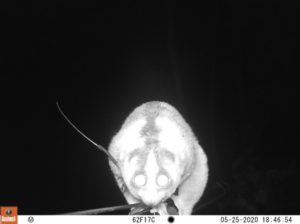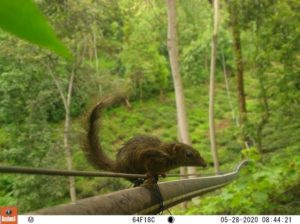For years, we have been documenting lorises at night using our camera traps; now we want to take pictures of other animals, specifically in the coffee fields, in daytime and nighttime, to see the impact of the wildlife-friendly farming practices.

We have had 4 camera traps on loris bridges and waterlines for monitoring how slow lorises use these bridges, and any other animals who use it! Recently we moved these camera traps to four brand new locations on other waterlines, so we will keep you up-to-date on what we find.
Moving to the coffee fields! We put *19* new camera traps on the ground so we can monitor the population, catch pictures of asian palm civet (Paradoxurus hermaphroditus) and also the diversity of any other mammal who wanders in the coffee field. We put the 19 camera traps based on shade or no shade fields, made sure they weren’t close to human paths, then assessed the connectivity, type of habitat, and also the availability of food sources.

Because of the new location for the coffee field, now we have to do the trial and error of the position of the camera traps. If the position is not good enough to catch the picture of the animals, then we will move them to the new position to find the perfect side of the coffee field. After finding the perfect location, it will be very exciting to find new animals in the new locations of both waterline and coffee field!

